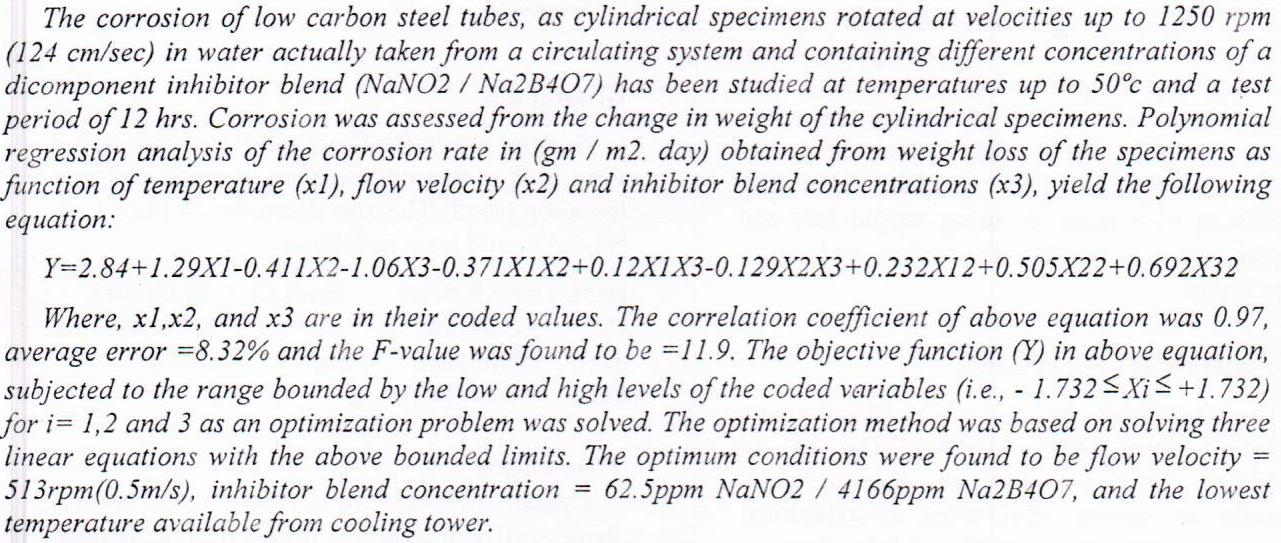
The present work involved a study the effect of cobalt(II) complex with formula [CoL(H2O)NO3] .4ETOH where L=Nitro [5-(P-nitro phenyl) -4-phenyl-1,2,4 traizole-3-dithiocarbamato hydrazide] aqua. (4) Ethanol and anti-cancer drug - cyclophosphamide on specific activity of two liver enzymes (GPT,ALP) by utilizing an in vivo system in female mice. On the enzymatic level an inhibition in the activity of GPT was noticed in different body organs such as liver, kidney and lung. The inhibition was noticed in both test and cyclophosphamide drug (cp). Mice were treated with three doses of cyclophosphamide (90,180, 250) ?g/ mouse for three days. The same doses were used for the cobalt (II) complex. The liver shows the highest rate of(GPT) inhibition co
... Show MoreInfrared photoconductive detectors working in the far-infrared region and room temperature were fabricated. The detectors were fabricated using three types of carbon nanotubes (CNTs); MWCNTs, COOH-MWCNTs, and short-MWCNTs. The carbon nontubes suspension is deposited by dip coating and drop–casting techniques to prepare thin films of CNTs. These films were deposited on porous silicon (PSi) substrates of n-type Si. The I-V characteristics and the figures of merit of the fabricated detectors were measured at a forward bias voltage of 3 and 5 volts as well as at dark and under illumination by IR radiation from a CO2 laser of 10.6 μm wavelengths and power of 2.2 W. The responsivity and figures of merit of the photoconductive detector
... Show More (1)
(1)
Epoxy (EP) – Silica (SiO2) composites are well known composites used in microelectronic industry . So it is important to study their dielectric behavior under different conditions such as
the presence carbon black (UV absorber) and immersion in the water for 30 days .
Dielectric properties were calculated over the frequency range 102 – 106 Hz for epoxy composites with different weight % of micrometer 1.5μm SiO2 particles (60%, 65% and 70wt%) modified with 0.5wt% silane coupling agent to improve adhesion between EP and SiO2 phases .
The variety of clean energy sources has risen, involving many resources, although their fundamental principles remain consistent in terms of energy generation and pollution reduction. The using of hydropower system for energy production also has a dynamic impact in which it utilizes to harness the water for the purpose of energy production. As it is important to overcome the problem of accidents in the highway and rural areas in the case of server rainfall and flood by implementation a smart system that used for energy production. This paper aims to develop a controlled hydropower system installed in the drainage sinks allocated in highway roads used for producing. The proposed system consists of storage unit represented by pipes used for t
... Show More (2)
(2)
 (1)
(1)
 (8)
(8)
 (6)
(6)
The aim of this study was to know the inhibition activity of squeezed grape waste extract on Bacillus stearpthermophilus by using three different tempretures degree 40, 60 and 80c, in order to reduce the time exposure of food for preservation. This study include two branchs: First: isolation and identification of Bacillus stearothermophilus from soil, 5 sample were collected from the soil of the college agriculture/Baghdad university. Samples were cultured on nutrient agar, microscopic and culturing tests were conducted and many biochemical tests were done. The isolates were cultivated at 55 c and 65 c for differentiate it from Bacillus coagulans which is can't grow at 65 co. The c
... Show MoreThe physical substance at high energy level with specific circumstances; tend to behave harsh and complicated, meanwhile, sustaining equilibrium or non-equilibrium thermodynamic of the system. Measurement of the temperature by ordinary techniques in these cases is not applicable at all. Likewise, there is a need to apply mathematical models in numerous critical applications to measure the temperature accurately at an atomic level of the matter. Those mathematical models follow statistical rules with different distribution approaches of quantities energy of the system. However, these approaches have functional effects at microscopic and macroscopic levels of that system. Therefore, this research study represents an innovative of a wi
... Show More The performance of asphalt concrete pavement has affected by many factors, the temperature is the most important environmental one which has a large effect on the structural behavior of flexible pavement materials. The main cause of premature failure of pavement is the rutting, Due to the viscoelastic nature of the asphalt cement, rutting is more pronounced in hot climate areas because the viscosity of the asphalt binder which is
inversely related to rutting is significantly reduced with the increase in temperature resulting in a more rut susceptible paving mixtures. The objective of this study is to determine the effect of temperatures variations on the permanent deformation parameters (perm
